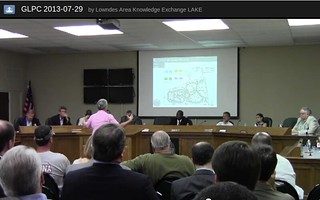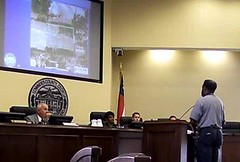Florida real estate effects of sinkholes in the same Floridan Aquifer that underlies Lowndes County would be worth looking at before rushing to build Moody Housing around a sinkhole on Val Del Road. It’s not just the sinkhole that may widen, it’s housing prices that may drop.
Diana Olick wrote for CNBC 15 August 2013, Overdevelopment widens Florida sinkhole problem,
Sinkholes may be as old as the earth itself, but the increase in sinkhole activity is new. The rush to reason why has put scientists, engineers and real estate developers at odds.

DAVID MANNING / Reuters
A section of the Summer Bay Resort lies collapsed after a large sinkhole opened on the property’s grounds in Clermont, Fla. on Aug. 12.Some geological experts believe the sinkhole activity is increasing because developers are pumping more water out of the ground for new projects or for agricultural use. While acid in the water itself is what causes the limestone under much of Florida to dissipate and create the holes, the water also acts as a support. Add water from heavy rains on the top soil, and you’ve got a bigger problem.
It is even beginning to weigh on the recovering real estate market in Florida.
Recent sinkholes of note in Lowndes County include: Continue reading










 …including the creation and maintainance of a Public Transit System in the City
of Valdosta and Greater Valdosta-Lowndes County.
…including the creation and maintainance of a Public Transit System in the City
of Valdosta and Greater Valdosta-Lowndes County.
